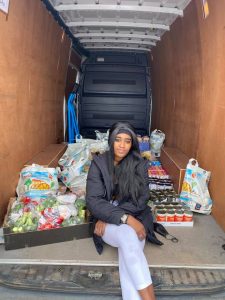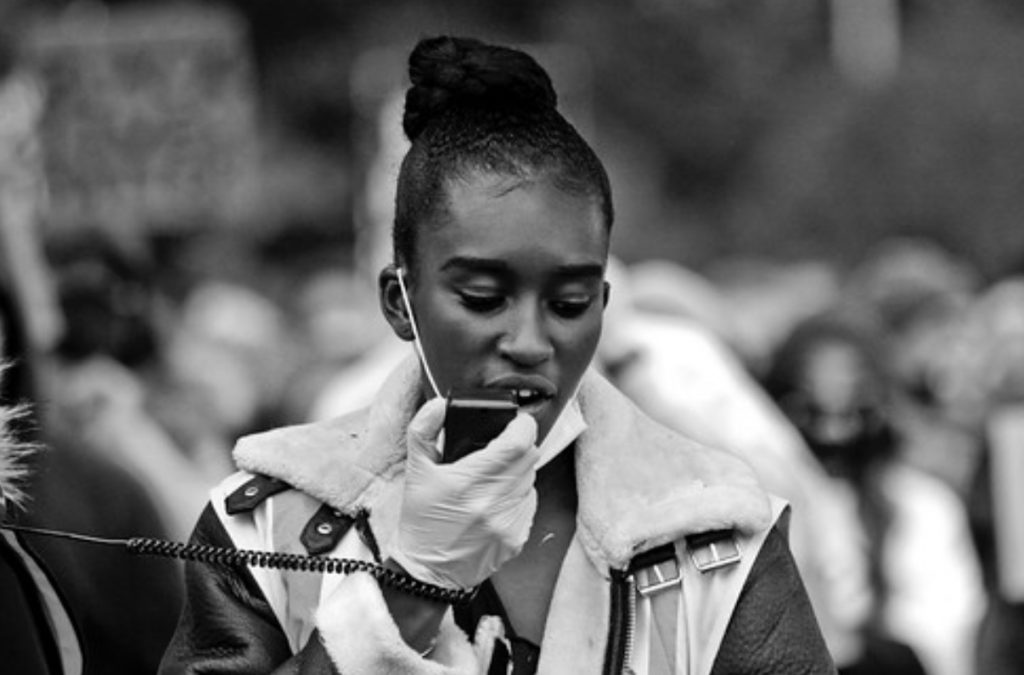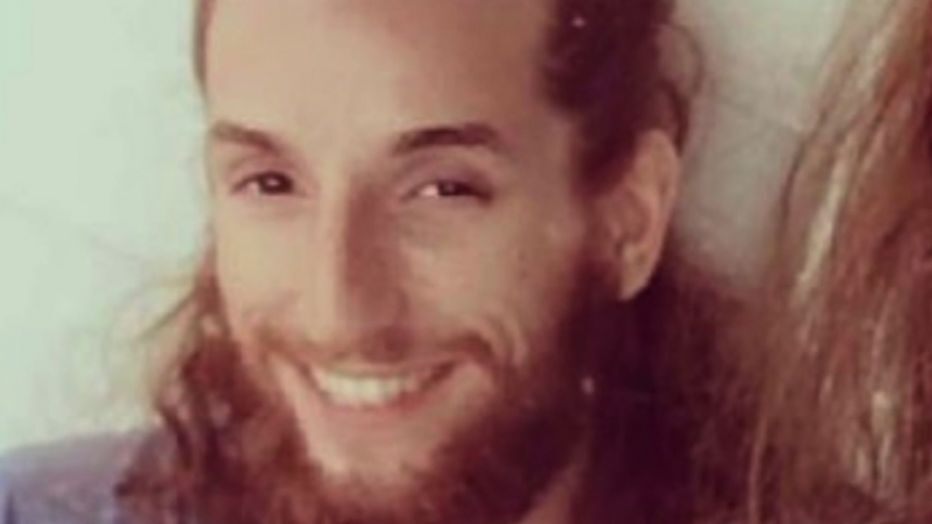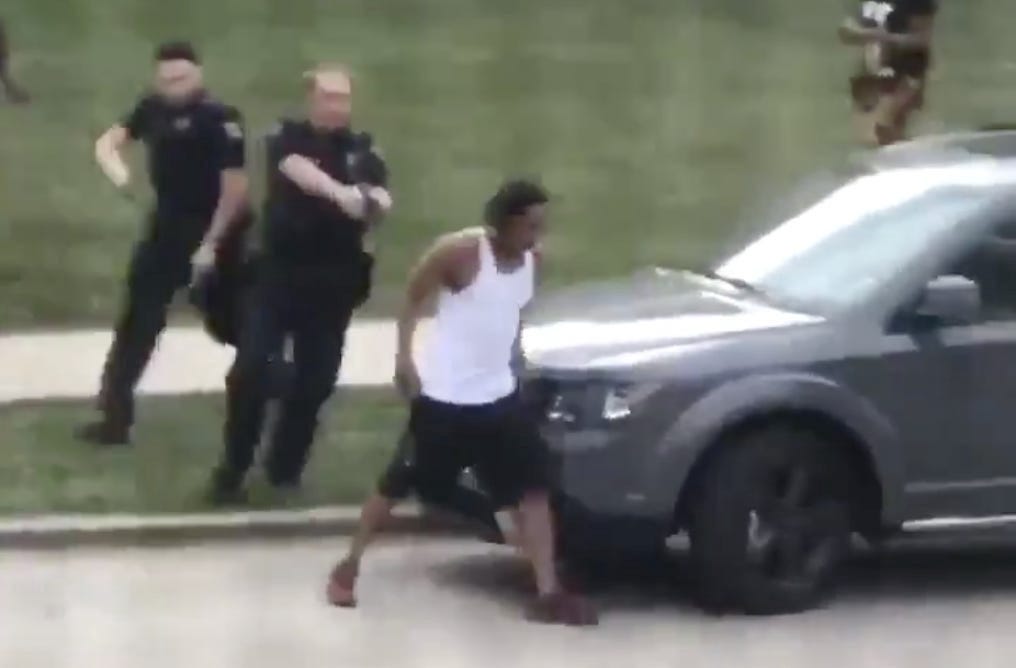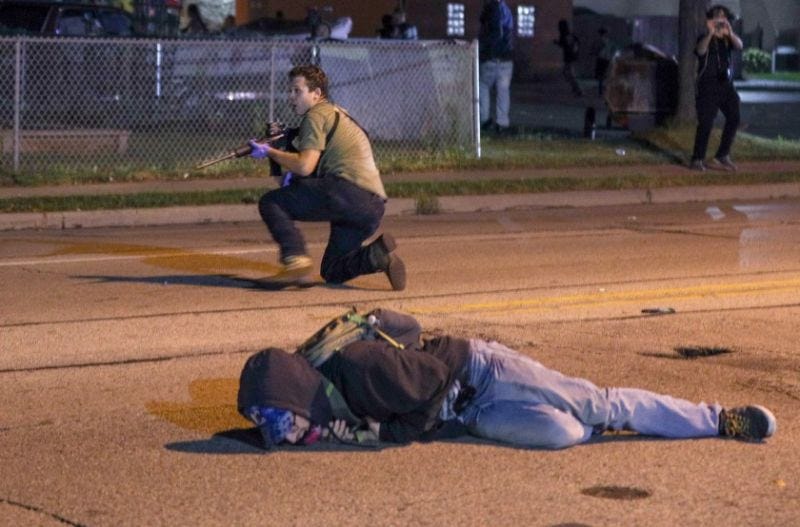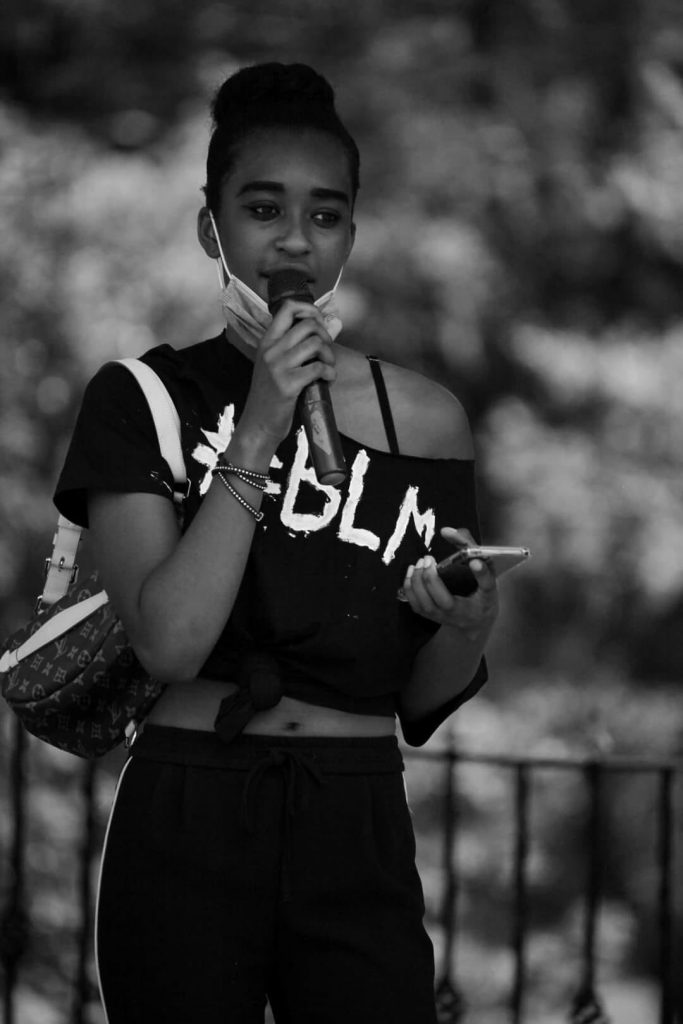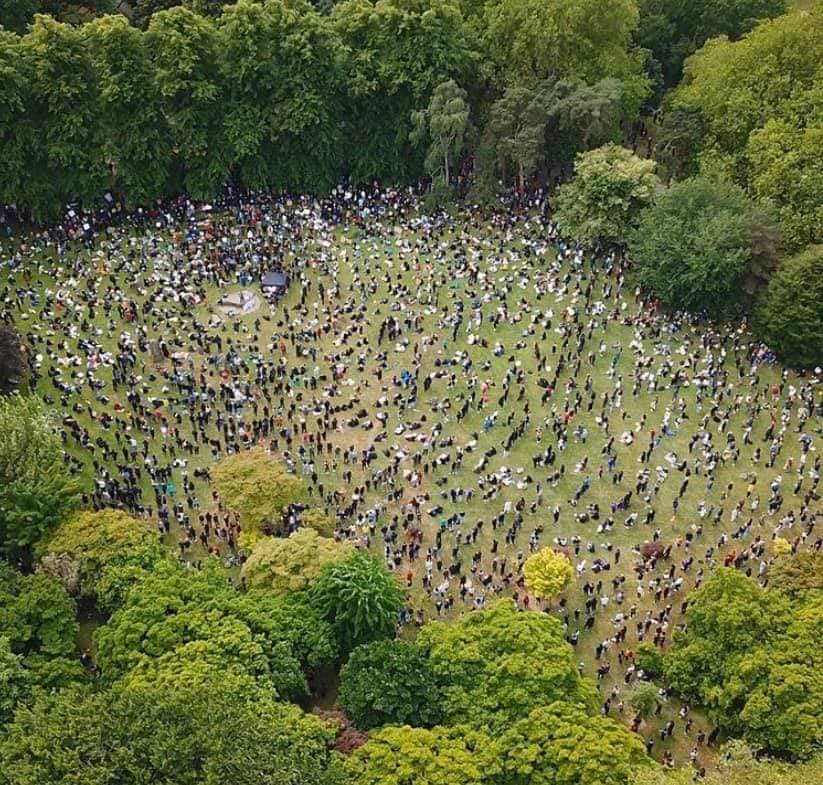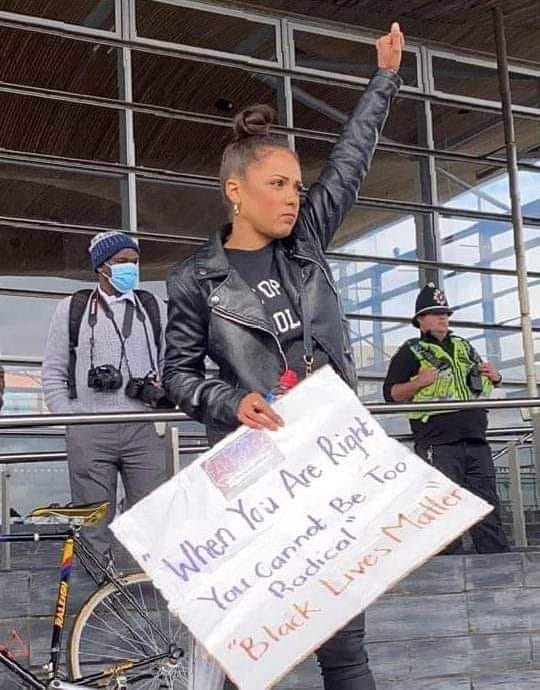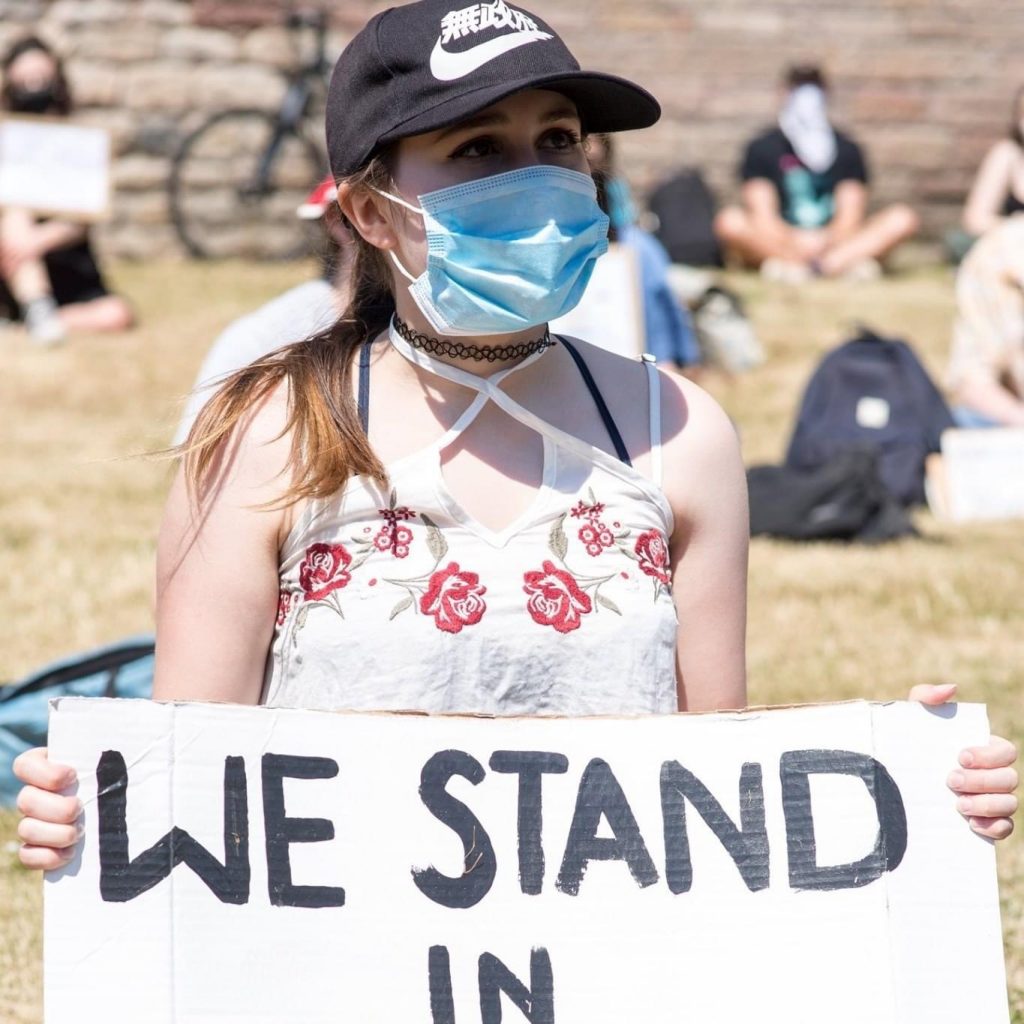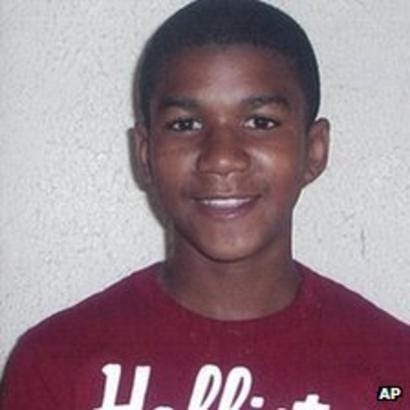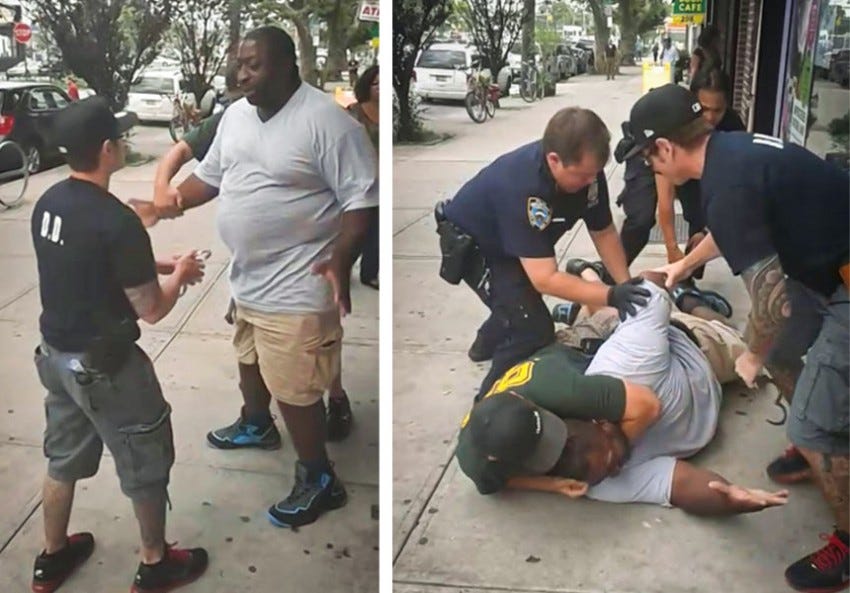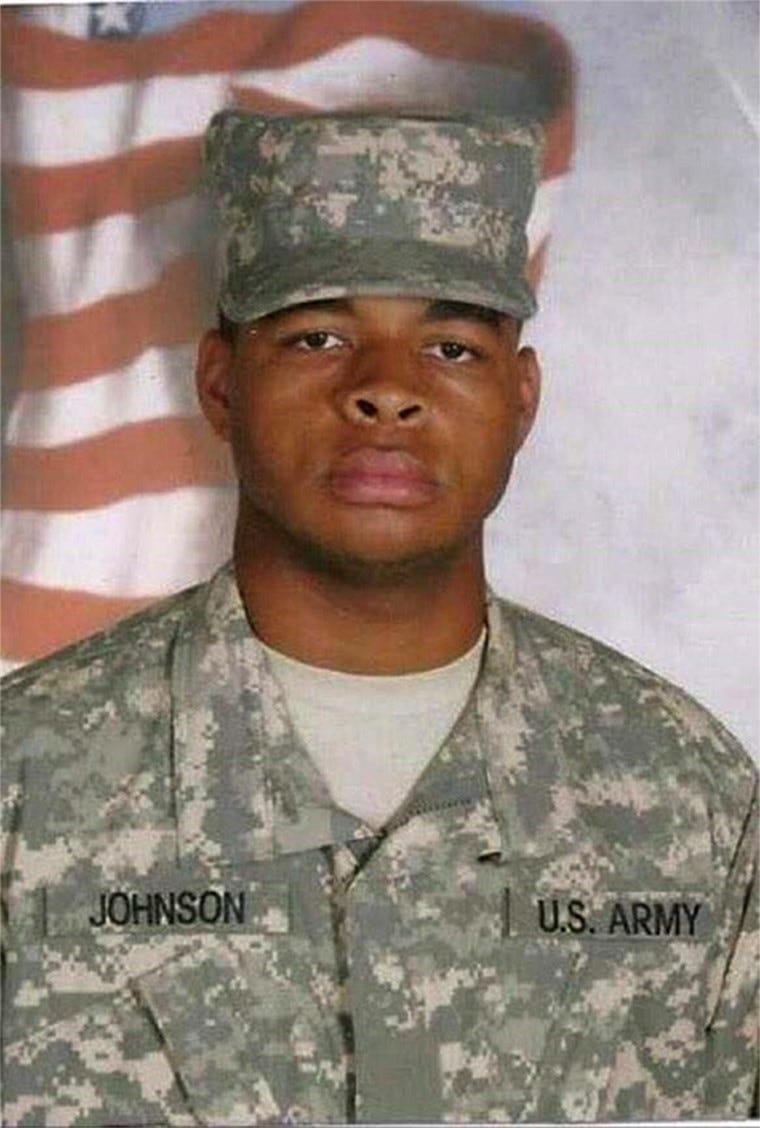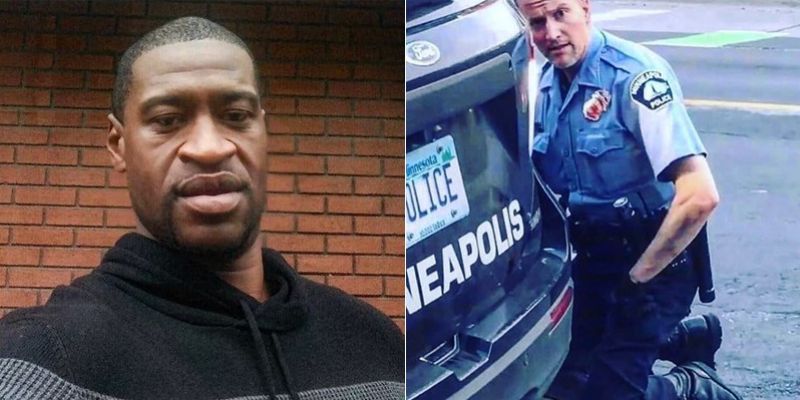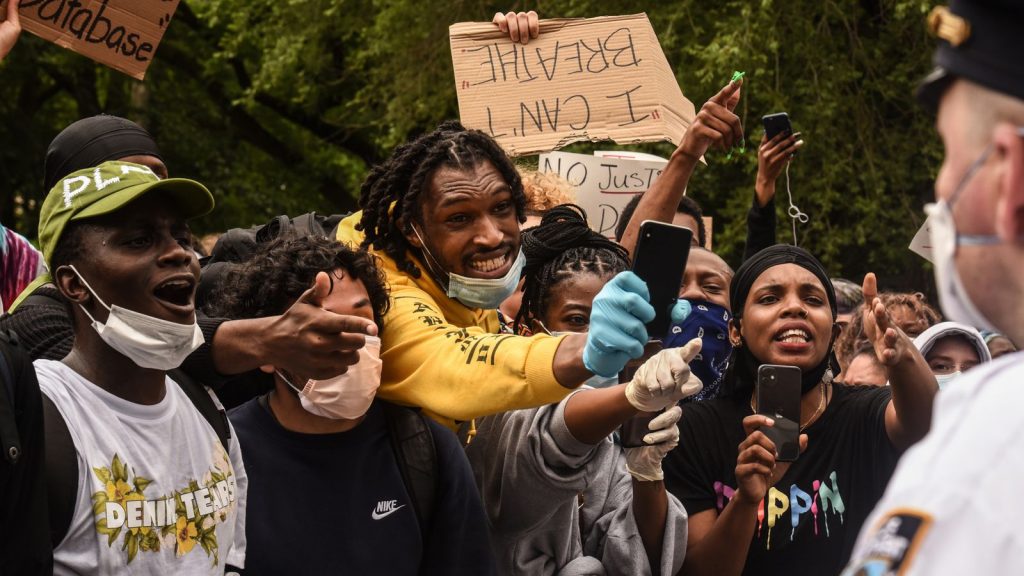Richard Greeman writes
- Breaches in the System’s Defenses
- Violence and Non-Violence
- Anti-Racist Black and White Convergence
- Cracks Within the Regime
- Police: The Vicious Dogs of the Bourgeoisie
- Cracks in the Military Wall
- Race and Class in U.S. History
Sparked by the police murder of George Floyd and fueled by Minneapolis authorities’ reluctance to arrest and charge the murderer’s three police accomplices, mass protests have been sweeping across the U.S. with an intensity not seen since the 1960s. In over 150 cities, African Americans and their allies have flooded the streets, braving the Covid 19pandemic, braving police violence, challenging centuries of racial and class inequalities, demanding liberty and justice for all, day after day defying a corrupt, racist power structure based on violent repression.
Breaches in the System’s Defenses
Today, after ten consecutive days in the streets, this outpouring of popular indignation against systematic, historic injustice, has opened a number of breaches in the defensive wall of the system. The legal authorities in the state of Minnesota, where George Floyd was murdered, have been force to arrest and indict as accomplices the three other policemen who aided and abetted the killer, against whom the charges were raised from third to second degree murder. A split has opened at the summit of power, where the Secretary of Defense and numerous Pentagon officials have broken with their Commander in Chief, Donald Trump, who has attempted to mobilize the U.S. Army against the protestors.
This historic uprising is an outpouring of accumulated black anger over decades of unpunished police murders of unarmed African-Americans. It articulates the accumulated grief of families and communities, the sheer outrage over impunity for killer cops in both the North and the South. It reflects anger at capitalist America’s betrayal of Martin Luther King’s “dream” of non-violent revolution and horror at the return to the era of public lynchings cheered on by the President of the United States. It impatiently demands that America at long last live up to its proclaimed democratic ideals, here and now. In the words of one African-American protester, William Achukwu, 28, of San Francisco: “Our Declaration of Independence says life, liberty and the pursuit of happiness. Right now we are only dealing with the life part here. This is a first step. But liberty is what a lot of people out here are marching for.
Violence and Non-Violence
It came as no surprise that local and state officials across the U.S. reacted to largely peaceful, spontaneous mass protests against police brutality and racism by unleashing a maelstrom of militarized police violence.[1] For a generation, the Federal government has been quietly gifting huge stocks of surplus military equipment, including tanks, to local police forces and sheriff’s offices eager to play with lethal new toys designed for counter-insurgency in places like Afghanistan. Under both Democrats (Clinton, Obama) and Republicans (Bush, Trump) the federal state has been arming law enforcement in preparation for a preventive counter-revolution. This is precisely what President Trump is calling for today: “full dominance” by means of military crackdowns, mass arrests and long prison sentences in the name of “law and order.” Thanks to the determination of these masses of militant, but largely non-violent protestors, the military is divided and Trump will not have his way.
A propos of violence, it was feared at first that the numerous incidences of setting fires, smashing shop fronts, and looting, especially after dark when the large, orderly crowds of mixed demonstrators had gone home, would in some way “spoil” the uprising and provide a pretext for the violent, military suppression of the whole movement, as called for by Trump, who blamed it all on an imaginary terrorist group called “ANTIFA” (short for “anti-fascism” in fact a loose network). At the same time, reports of gangs of young white racists wearing MAGA (“Make America Great Again”) hats committing vandalism, of “Accellerationists” systematically setting fires in black neighborhoods to “provoke revolution,” and of violent police provocateurs are not entirely to be discountedSuch actions play into Trump’s hands. On the other hand, the more reasonable voices of the hundreds of thousands of angry but nonviolent protestors, might not have been listened to by the authorities if it had not been for the threat of violence from the fringes if their voices were ignored. Instead of burning their own neighborhoods as has happened in past riots, today’s militants are strategically hitting symbols of state repression and capitalism – lighting up and destroying police property, trashing the stores of million-dollar corporations, and even pushing against the gates of the White House. In any case, as far as “looting” is concerned, as the spokeswomen of BLM argued at George Floyd’s funeral , white people have been looting Africa and African-Americans for centuries. Pay-back is long over-due.
Black and White Anti-Racist Convergence
What is especially remarkable and heartening to see as we view the impassioned faces of the demonstrators through images on videos, newspaper photos, and TV reports, is the realization that at least half the demonstrators in the crowds proclaiming “Black Lives Matter” are white people! Here again, a serious breach has been opened in the wall of systemic, institutionalized racism that has for centuries enabled the U.S. ruling class to divide and conquer the working masses, pitting slave laborers and their discriminated descendants against relatively “privileged” white wage slaves in a competitive race to the bottom. Today, they are uniting in the fight for justice and equality. Equally remarkable is the continuing. leadership role of women, especially African American women in the founding of both the #BlackLivesMatter movement and the Women’s March against Trump’s Inauguration. The participation of young and old, LGBT and physically challenged folks is also to be remarked.
This convergence of these freedom struggles across deeply rooted racial divides promises to open new paths as U.S. social movements emerge from the Covid confinement. Even more remarkable, albeit limited, are incidents, also recorded on citizen video, of individual cops apologizing for police violence, hugging victims, and taking the knee with demonstrators. Public officials, like the Mayor of Los Angeles, have also been obliged to meet with the protestors and to apologize for the previous racist remarks. Moreover, as we shall see below, serious cracks have emerged in the unity of the U.S. military, both among the ranks, which are 40% African American, and even among top officers. Such is the power of this massive, self-organized, inter-racial movement demanding “freedom and justice for all” (as stated in the Pledge of Allegiance to the Republic).
Cracks Within the Regime
Today, after ten days during which the protests have continued to increase numerically and to deepen in radical content, cracks have opened in the defenses of the ruling corporate billionaire class and have reached the White House, where Donald J Trump, the self-deluded, ignorant bully and pathological liar supposedly in charge, has finally been challenged by his own appointed security officials.
It must be said that in Trump today’s billionaire ruling class has the representative it deserves, and the Donald’s ineptitude, visible to all, is symbolic of its historic incapacithy to retain the right to rule. Trump’s flawed, self-centered personality incarnates the narrow class interests of the 0.01% who own more than half the wealth of the nation. His obvious selfishness exemplifies that of the billionaires he represents (and pretends to be one of). Out of his willful ignorance, Trump speaks for a corporate capitalist class indifferent to the global ecological and social consequences of its ruthless drive to accumulate, indifferent to truth and justice, indifferent indeed to human life itself.
Trump’s clownish misrule has embarrassed the state itself. First came the childish spectacle of the most powerful man in the world first hunkering down in his basement bunker and ordering the White House lights turned off (so the demonstrators outside couldn’t see in?). Then came the order to assault peaceful protestors with chemical weapons so as to clear the way for President Trump to walk to the nearby “Presidents’ Church” (which he never attends and whose pastor he didn’t bother to consult) in order to have himself photographed brandishing a huge white Bible (which he has most likely never read) like a club.
Trump, whose only earned success in life was his long-running reality-TV show “The Apprentice,” apparently devised this bizarre publicity stunt to rally his political base of right-wing Christians and show how “religious” he is. But it backfired when the Bishop of Washington pointed out that Jesus preached love and peace, not war and vengeance. The next day, even demagogues like Pat Robinson of the far right wing Christian Coalition spoke out against him, while the anti-Trump N.Y. Times triumphantly headlined: “Trump’s Approval Slips Where He Can’t Afford to Lose It: Among Evangelicals.”
Let us pause to note that American Christianity, like every other aspect of American civilization, is a knot of contradictions all rooted in the fundamental problem of “the color line.” Although the racist, conservative, pro-Israel, Christian right has been the core of Trump’s support, liberation theology and the black church have long been the base of the Civil Rights movement for equality. Indeed, George Floyd the murdered African-American (known as “Big Floyd” and “the Gentle Giant”) was himself a religiously motivated community peacemaker. So are many of the demonstrators, white and black, chanting “No Justice, No Peace.”
Trump’s phony populist act may have helped catapult him into office in 2016 (thanks to Republican-rigged electoral system and despite losing the popular vote by three million votes), but as Abraham Lincoln once remarked of the American public “You can fool some of the people all of the time and all of the people some of the time, but you can’t fool all of the people all of the time.” Today, Trump’s time is up
Police: The Vicious Dogs of the Bourgeoisie
To me, the most emblematic image of the moment is that of a self-deluded Donald Trump, huddled (like Hitler) in his underground bunker with the White House lights turned off, shivering with fear and rage at the demonstrators outside, and threatening to sick (purely imaginary) “vicious dogs” on them. Trump has the Doberman mentality of the junk-yard owner from Queens he incarnates; he is the spiritual descendant of the slave-catcher Simon Legree chasing the escaped slave Eliza with his dogs (See Uncle Tom’s Cabin).
Vicious dogs of the bourgeoisie. That’s what the police are paid to be. (Even if a few of them may turn out to be basically friendly German Shepherds underneath, like those who took the knee with the protestors). Their canines are the sharp teeth of the American state. Along with the Army, cops are the essence of the actual deep state which Marx defined as “special bodies of armed men, courts, prisons etc.” (As opposed to “the people armed” in democratically-run popular militias).
Although subservient to the bourgeois state, this police apparatus, like the Mafia with which it is sometimes entwined, has a corporate identity of its own based on omertà or strict group loyalty. This unwritten rule is the notorious “Blue Wall of Silence” which prevents cops who see their “brothers” committing graft and violent abuses from speaking out or testifying against them. The blue wall assures police impunity, and it is organized through police “unions” which, although affiliated with the AFL-CIO, are violently reactionary, anti-labor and pro-Trump. The President of the International Police Union has been filmed wearing a red “Make America Great Again” hat and shaking hands with Trump at a political rally, while protesters in Minneapolis have been calling for the ousting of Bob Kroll, the local police union president who has been widely criticized for his unwavering support of officers accused of wrongdoing.
The Blue Wall of silence extends up the repressive food chain to prosecutors, District Attorneys and even progressive mayors, like New York’s Bill Di Blazio, who defended N.Y. police driving their SUVs straight into a crowd of demonstrators, although his own mixed-race daughter was arrested as a Black Lives Matter demonstrator! Di Blazio, like his reactionary predecessor, Rudy Giuliani, former “law and order” District Attorney and current Trump advisor, knows that his political future is dependent on the good will of the Police Union. (Even junk-yard owners are afraid of their own vicious dogs).
This customary coddling of the police even extended to the New York Times initial coverage of violent police attacks on members of the press in Minneapolis and elsewhere. In its report The Times hid behind a twisted notion of “objectivity” (blame both sides) to avoid pointing fingers at cops thus observing the “blue wall of silence” even when reporters are victims. (At this writing over a thousand such attacks have been recorded). Using passive voice rather than naming the actual assailants (brutal racist cops) the NYT report conflated a single isolated incident where a crowd attacked news people from Trump’s FOX network, with systematic, nationwide police attacks on members of the media. A week later, that sacrosanct Blue Wall is beginning to crumble. Not only have the D.A. and Governor of Minnesota been forced to escalate the charges against Derek Chauvin, George Floyd’s killer, to second degree murder (why not first?) and arrest his three police accomplices, the latter have begun to rat each other out. Facing 40 years in prison and a bail of at least $750,000, Thomas Lane and J. Alexander Kueng, both rookies, are blaming Chauvin, the senior officer at the scene and a training officer, while Tou Thao, the other former officer charged in the case, had reportedly cooperated with investigators before they arrested Chauvin.[3]
Cracks in the Military Wall
Such is the power of today’s mass Black Lives Matter uprising, that it has opened a breach in U.S. capitalism’s most important defense wall: the military. For if the police are American capitalism’s junk yard Dobermans, the Armed Forces are basis of its domination over the world. And if the cry for equal justice has opened a tiny crack in the Blue Wall of Silence, the breach in the ranks of the U.S. military, which is 40% colored and recruited from the poorest classes of American society, is more like a gulf.
The rank and file in today’s U.S. Army, Navy and Air Forces are a reflection of American society, of a population of mainly poor and minority people for whom the military provides one possible solution to unemployment and discrimination. The mood of the troops reflects that of the communities they are recruited from, and their officers, who are responsible for their morale, discipline, and loyalty, must be sensitive to their feelings. This situation is epitomized by the following quotations from the N.Y. Times:[4]
Chief Master Sgt. Kaleth O. Wright of the Air Force, who is black, wrote an extraordinary Twitter thread declaring, “I am George Floyd.”
“The Navy’s top officer, Adm. Michael M. Gilday, said in a message on Wednesday to all sailors: “I think we need to listen. We have black Americans in our Navy and in our communities that are in deep pain right now. They are hurting.” “
Although Gen. Mark A. Milley, the chairman of the Joint Chiefs of Staff,
released a message to top military commanders on Wednesday affirming that every member of the armed forces swears an oath to defend the Constitution, which he said “gives Americans the right to freedom of speech,” The Generals and Admirals, retired and active, who have been speaking out for racial justice and the rights of demonstrating citizens this week are not all sudden converts to the cause of peace and justice. Rather, the America officer class is sharply focused on its global mission, which is to protect American domination around the world by leading these troops to kill and be killed in bloody civil war situations in mainly non-white countrie“We are at the most dangerous time for civil-military relations I’ve seen in my lifetime,” Adm. Sandy Winnefeld, a retired vice chairman of the Joint Chiefs of Staff, said in an email. “It is especially important to reserve the use of federal forces for only the most dire circumstances that actually threaten the survival of the nation. Our senior-most military leaders need to ensure their political chain of command understands these things.”
For the troops, policing the world for capitalism is an endless, incompressible and demoralizing mission of violent counter-insurrection from which they return physically and psychologically damaged, often haunted by guilt, only to face unemployment and lack of support from the public and the underfunded Veterans’ Authority. As for the officers, it is a question of maintaining discipline and morale. The top brass know that deploying troops trained in counter-insurrection to control civil disturbances on U.S. soil would inevitably have one of two negative results (if not both): 1. Un-acceptable violence against civilians and/or 2. fraternization with the protestors, mutiny, and disobedience among the ranks. Hence the Pentagon’s open break with their “law and order” Commander in Chief. The danger of fraternization is especially real in National Guard regiments, whose troops are drawn from the populations of the states their families live in.
“Senior Pentagon leaders worry that a militarized and heavy-handed response to the protests, Mr. Trump’s stated wish, will turn the American public against the troops, like what happened in the waning years of the Vietnam War, when National Guard troops in combat fatigues battled antiwar protesters at Kent State. Adm. Mike Mullen, a former chairman of the Joint Chiefs of Staff, denounced the use of the military to support the political acts of a president who had “laid bare his disdain for the rights of peaceful protest in this country.”
Although the eternal showman Trump apparently appointed Mark Milley chairman of the Joint Chiefs of Staff on the basis of the General’s physical resemblance to John Wayne, Milley happens to be a serious military historian. So is Secretary of Defense Esper. Both are aware that revolutions can only happen when there is a split in the ranks of the soldiers. In their West Point courses on counter-insurgency, they have certain read of the classic example of Russia in 1917 when the Cossacks were sent to block the demonstrators in St. Petersburg. These fierce cavalry men sat passively still on their horses as the strikers dove between their legs, leading Trotsky to famously remark that “the revolution passes underneath the belly of a Cossack’s horse.” And indeed, not long after this incident the Russian soldiers formed ‘Soviets’ (councils) and joined the workers’ and peasants in overthrowing the Czar.
Of course in 1917 Russia was in the middle of a social crisis, ruled by an inept, self-deluded Autocrat and an outdated, paracitical aristocracy, heedlessly bleeding lives and treasure into an endless, pointless, unpopular foreign war. Nothing even vaguely similar could ever happen in optimistic, triumphant, happy, America under the firm leadership and uniting presence of our loveable President, Donald J. Trump.
Race and Class in U.S. History
American society has been riddled with contradictions since its beginnings, and these contradictions, rooted in race and class, are still being played today out in the streets of over 150 U.S. cities. Today’s uprisings, interracial from the beginning, express popular frustration that after centuries of struggle against slavery, after a bloody fratricidal Civil War in the 1860s and after the “second American revolution” of Reconstruction, after the Civil Rights movement and the urban riots of the 1960s, the lives of the descendants of black slaves are still not safe in the land that first proclaimed the human right to “life, liberty and the pursuit of happiness.”
The American Revolution of the 18th Century professed the universal principle, as expressed in the 1776 Declaration of Independence that “All men are created equal and endowed with certain inalienable rights.” Yet, despite the participation of free blacks in the Revolution (Crispus Attucks), that promised equality was quickly contradicted by the inclusion in the U.S. Constitution of notorious clauses which not only institutionalized black slavery in the American Republic, but also assured the permanent predominance in the federal government for the slaveholding Southern states.
The electoral system created by that slave-owners Constitution was based on the relative male populations of the several states, however allowed the Southerners to include their slaves as “three fifths of a man” (!) in the census. Thus the minority of white Southerners could always outvote the more populous North and dominate the Union. This hypocritical “compromise” was the price of national unity in a nation “half-free and half-slave.” Accordingly, ten of the first twelve American Presidents were slave-owners, and more and more such “compromises” favoring the slave-owner interests were introduced as new states were added to the Union, spreading the Southern slave empire further and further West. This rickety, lopsided Federal Union based on Southern domination held until 1860.
However, when Northern moderate Abraham Lincoln took office as President in 1861, most of the slave-owning states seceded from the Union, formed a rebellious Confederacy, launched a war on the United States, and sought recognition from Great Britain – the Confederacy’s main customer for slave-grown cotton. It is often been argued that the bitterly fought U.S. Civil War, which lasted four years and registered higher casualty rates than even WWI, was not really “about slavery.” But it was. To hide this ugly truth, the white Southerners still call it “the War Between the States.” Yet the war was precipitated by white Abolitionists like John Brown, who aided and provoked slave rebellions. Moreover, the huge numbers of young farmers and mechanics who volunteered and even re-enlisted to fight for the North knew they were fighting for human freedom, as their correspondence with their families and hometown newspapers indicated.
Finally, the Civil War, long a bloody stalemate, was won by the Union North only after Lincoln unleashed the fighting power of the Negro slaves in the South by reluctantly issuing the Emancipation Proclamation, as Karl Marx, writing on behalf of anti-slavery British textile workers, had urged American President in a famous letter. Soon, slaves began escaping from their plantations and flocking to the Union Armies, depriving the white South of much of its black labor force. The Union Army fed them, immediately put them to work, and later enrolled them in Negro regiments who fought bravely and effectively to defeat the slaveocracy. Not “about slavery?”
Marx, speaking for the boycotting white English textile workers, had explained their unity with the slaves: “Labor in the white skin can never be free as long as labor in the black skin is branded.” A century and a half later, African-American workers in the U.S. are no longer “branded” like their enslaved ancestors, but even today the color of their skin brands them and makes them prey to oppressors, like bosses, landlords, discriminatory banks and the violent racist police who, up to now, have correctly assumed they can mistreat and even murder them with impunity.
The tragedy of the Civil War, which as we have seen was fought over slavery, is that although the North won the War, the South won the peace. Lincoln was shot in 1865, and his Vice-President, a border state Republican name Johnson, had strong pro-slavery Southern sympathies, and he used his power to sabotage the efforts to reconstruct the slave South on a new basis of freedom and equality. Although the Union passed three Reconstruction Amendments to the U.S. Constitution, granting the former slaves and their descendants citizenship and full civil rights including the ballots. Reconstruction of the South was a “Second American Revolution,” making real and legal the freedom and equality promised by the Revolution of 1776.
Tragically, under President Johnson the former Confederate leaders, instead of being tried for treason, were pardoned and allowed to take high office. T here, supported by armed mobs of whites, they proceeded to discourage the newly-freed slaves from voting and owning property through Klu Klux Klan racist terror, even though
the South was still occupied by victorious Union troops. President Johnson was impeached (but not convicted) by Congress, and by the time President Grant took office and attempted to use the Federal Troops occupying the South to protect the nascent democracy of elected Negroes, it was too late. Thousands of Northern whites went South to help newly freed blacks through literacy and political education, at the risk of being lynched by local racists. Great progress was made and America’s first free public school system established (only to be later forcibly segregated and privatized by racists).
Through armed white violence, slavery had been “replaced” by segregation, inequality and a racist economic system of “boss over black.” In 1876, twenty years after the Civil War, the ruling classes of the industrial North and formerly rebellious cotton-producing South united politically. They celebrated this ruling class unity by withdrawing the Federal occupation from the south, leaving the Negroes helpless before the armed KKK and racist local authorities. Why? The troops were needed in the North to crush the violent strikes of the industrial workers, who were organizing unions (but largely on a “whites only” basis). Later, unwitting blacks were brought North by train to be used as strikebreakers – another ploy in the capitalists’ racist “divide and rule.”
By 1900, W.E.B. Dubois, the black Marxist sociologist, historian of Reconstruction, and founder of the NAACP, was describing the U.S. as a country with “two working classes,” one black one white. African American troops fought bravely (in segregated units) for the United States in the First World War in the hope of having their manhood recognized, but they returned to face increased racist repression. President Wilson pronounced Griffith’s racist pro-KKK film “Birth of a Nation” a masterpiece, and 1919 was a record year for lynchings, especially of ‘uppity’ black soldiers who returned in uniform.
The struggle to make the Second American Revolution established by the post- Civil War Reconstruction Amendments a reality was resumed after the Second World War and gave birth to the Civil Rights Movement and the Civil Rights laws of the 1960s in the hope of completing America’s promise, the “dream” of M.L. King. Federal troops were once more mobilized to prevent white racist mobs from attacking African Americans to exercise their legal right vote and attend the same schools as whites: by Eisenhower in 1956 at Little Rock and by JFK in Mississippi in 1962. Yet once again, despite legal victories and more blacks in visible the media and government, nothing fundamental changed on the ground. Sixty years later, African Americans are just a poor, just as segregated, just as excluded from first-class health, education and housing services, and just as subject to racist police violence as were their grand parents.
The murder of George Floyd is said to be the “straw that broke the camel’s back.” It was the straw that set fire to the haystack of anger and frustration that was smoldering for generations. Will this blaze be yet another fire of straw, fated to die out? I think not. The context has changed. U.S. society, like the whole capitalist world, is in crisis. The economy, with productivity declining, with inequality and unemployment increasing, with debt and speculation ballooning was already in crisis. The pandemic pushed it over the top, and the resulting recession has only just begun. Thirty years after the post Cold War “new world order” of democracy, peace and un-ending grown was proclaimed, few Americans believe that their lives and those of their children likely to improve, what with social and ecological doom impending. The system has little to promise them and its leaders little to inspire confidence in them. In other words, they are no longer politically and socially ‘hegemonic’ and must depend on coercion to hold power. Today, the credibility and legitimacy of that coercive power, the cops and army, is being called into question by the masses, white and colored, demanding justice and equality.
The police may well continue to attack the demonstrators and while Trump and his followers call for militarization of the country in the name of protecting property, law and order, it is clear that a breach has been opened in the Blue Wall of Silence protecting the privileges of the billionaire class against the power of the working masses who today face not only a political crisis but also the crisis of an ongoing pandemic, the crisis of poverty and mass unemployment, and the impending climate crisis of which Covid is a symptomatic forerunner.
Throughout U.S. history, from the white Abolitionists, to the Yankee Civil War volunteers, to the Northern “carpet-baggers” who worked for Reconstruction, to the white Civil Rights marchers of the 1960s to the millions of whites in the streets proclaiming Black Lives Matter today, the unity in struggle of America’s racialized peoples has brought about whatever progress in freedom and democracy this race-benighted Republic as ever known.
Like the British workers in Marx’s day, today’s “privileged” white demonstrators, themselves victims to a lesser degree of American capitalism, know in their hearts that they can “never be free” and never be safe from state violence until Black Lives really do matter and black skins no longer “branded.” They know that “Black and White Unite and Fight” is the only possible way to block authoritarian government, prevent fascism, establish democracy, institute class equality and face the future with a modicum of hope.
June 7, 2020
[1] https://www.nytimes.com/2020/05/31/us/police-tactics-floyd-protests.html Facing Protests Over Use of Force, Police Respond With More Force. Videos showed officers using batons, tear gas, pepper spray and rubber bullets on protesters and bystanders.
[2] A Reporter’s Cry on Live TV: ‘I’m Getting Shot! I’m Getting Shot! https://www.nytimes.com/2020/05/30/us/minneapolis-protests-press.html?action=click&algo=combo_lda_unique_clicks_decay_6_20_ranks&block=more_in_recirc&fellback=false&imp_id=586207250&impression_id=983968915&index=1&pgtype=Article®ion=footer (See phrases in italics): “From a television crew assaulted by protesters to a photographer struck in the eye, journalists have found themselves targeted on the streets of America. Linda Tirado, a freelance photographer, activist and author, was shot in the left eye Friday while covering the street protests in Minneapolis.Ms. Tirado is one of a number of journalists around the country who were attacked, arrested or otherwise harassed — sometimes by police and sometimes by protesters — during their coverage of the uprisings that have erupted nationwide after the death of George Floyd in Minneapolis… With trust in the news media lagging, journalists have found themselves targeted.”
[3] https://www.nytimes.com/2020/06/04/us/george-floyd-police-records-chauvin.html
[4] https://www.nytimes.com/2020/06/03/us/politics/esper-milley-trump-protest.html
]]>
